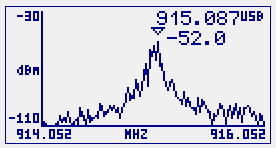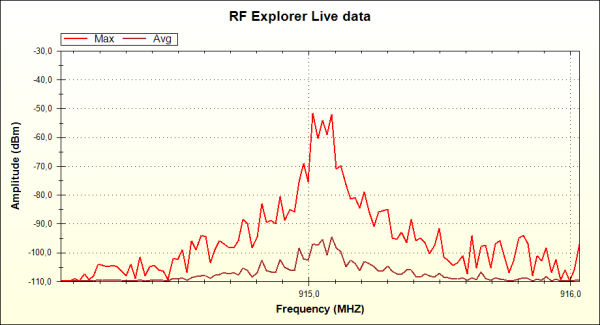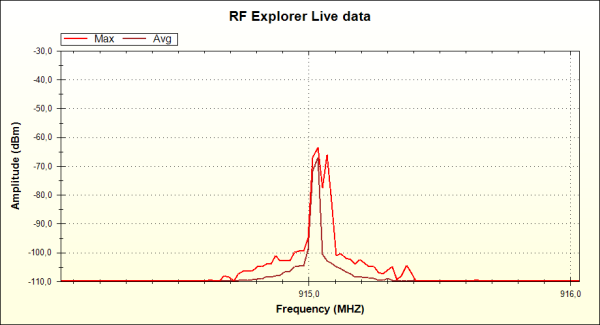GFSK versus FSK
Let’s do one last experiment with RFBee and RFExplorer together. We have been using the GFSK low speed 4.8Kbps setting as we had the port 2 connected to GND when the unit was powered on.
Let us now change that and see the result. Unplug both cables out of GND, and recycle power in Stalker.
After everything stabilizes, we will get something very different:
There are two reasons for this change.
First of all, GFSK modulation is a much cleaner signal than FSK. This is because GFSK process filters out spurious to a much narrower transmission bandwidth than FSK. But in addition to that, we are now transmitting at 76.8Kbps which has a much wider bandwidth than 4.8Kbps we used before.
Let’s change the span now to 2Mhz to get a better idea of how dirty this new signal is when compared to our previous GFSK at the same span.
Compare FSK 78Kbps...
With GFSK 4.8Kbps
Same signals in the RF Explorer screen (left is FSK, right is GFSK):


You can see a significant difference in band occupancy.
If you want to go deeper in some of these topics, check Wikipedia for GFSK, FSK and Bandwidth. You may want to read FM and Modulation articles as well to get a better idea of how a phase or frequency modulated signal can be interpreted in the frequency domain.
But usually is way more interesting and informative to experiment with a nice device like RFBee + Stalker to understand how it behaves using a tool like RF Explorer spectrum analyzer. You may also want to use this setup to finetune the RFBee firmware and add new modes, such as a high speed GFSK, and see the results, or change the antenna and look for more power in the transmitted signal.
Any question or comments in groups.google.com/group/rf-explorer.
Download the Arduino sketch here (link)



